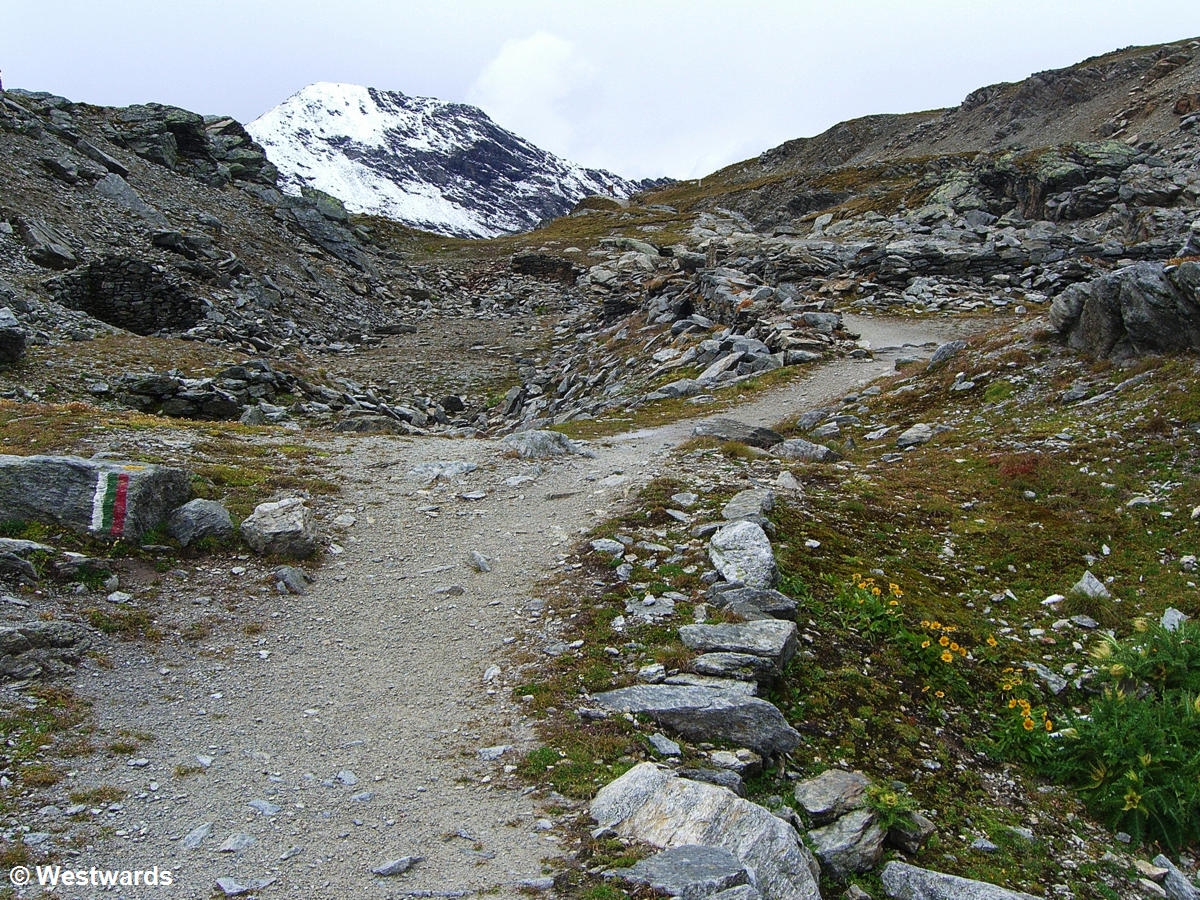
„Have you seen everything?” the elderly man in braces staffing the cashier and book stall at the Messner Mountain Museum Ortles (“MMM Ortles”) in South Tyrol asks us with a schoolmasterly air. Yes we have. In fact, there is not much to see in the first place, nor is it particularly interesting. Without any recognizable order, oil paintings of glaciers and snow-capped mountains, especially of the 3905 m high Ortles/Ortler, the highest mountain in the region, cover the walls. Some pictures bear a dedication, but most lack any information regarding the place name and the painter. In a small dim room we watch a video alternating between snowy mountain images and excerpts from some speeches by Reinhold Messner. It takes us minutes to figure out that we are already watching the documentary on Hermann Buhl, a famous mountaineer of the 1950s, rather than the waiting loop. Also on exhibition is the tent Messner used during his North Pole expedition. Isa is surprised. „I thought he does only high mountains?” But the hostile weather conditions are the same in the pole regions and on extremely high mountains, and we begin to suspect that this is what appeals to Messner in the Vinschgau region.
Remnants of WWI

„For once we are not going to shirk the rain,” we decide stubbornly in the face of the dark clouds and continue our hike on the Goldsee Trail. 10 minutes later we are marching through a hail shower that eventually gives way to light snow. And after a further 20 minutes, the sun comes out again. The capricious weather slows down our hiking pace considerably as we have to change in and out of our rain gear several times. Like most paths in the Vinschgau Valley, the Goldsee Trail was built during WWI by the Austrian army. Caves hewn into the rocks like hollow empty eyes dot the hillside. German-speaking South Tyrol then belonged to Austria, and here ran the front line with Italy, complete with bunkers, forts, and cannon positions all the way up to the Stilfser Joch.

“It’s amazing what one is able to do! I never thought we would make it up here,” the young mountain biker standing up in his saddle says over the shoulder to his friend following close behind. The mountain pass at the Stilfser Joch connects the German-speaking Vinschgau Valley with the Italian-speaking Veltlin Valley by a road winding up in 48 switchbacks. With inclines of up to 18%, the 24 km-stretch covering 1800 altitude meters is clearly much beloved by gasping cyclists. Even today, groups of men in black and yellow spandex tights have made the strenuous tour and now have a well-deserved Bratwurst at the stall run by an earthy indigenous with a white beard, a traditional Tyrolean hat, and a very peculiar accent.

Empress Sissi in Merano
To escape the damp cold in the mountains (and in our tent!) we move on to the quaint little town of Merano in South Tyrol, 1000 m deeper down in the valley. Merano has been called a spa town since the 19th century, without actually having any mineral spring. A smart mayor had the idea that the mild climate would be ideal for winter treatments and thus invented the concept of a climatic spa – long walks propped up with grape cures and healthy whey drinks. Mineral water containing radon was only discovered in 1933, and it took Merano until 2005 to open a real Thermal Bath. Nevertheless, the concept worked: In 1870 the Austrian Empress Elisabeth (Sissi) and her daughters spent the whole winter in Merano, making the town one of the most en-vogue spas for the European aristocracy.

Statue of empress Sissi 
Castle of Count Trauttmansdorff
During her visits Empress Elisabeth stayed in the gothic castle of her friend Count Trauttmansdorff, who is more famous for a creamy rice dessert named after him. A few years ago, the huge Merano Botanical Gardens have been opened on the grounds of Trauttmansdorff Castle. Hillsides full of exotic plants grow eagerly in the mild climate – and yet the gardens feel somehow empty. For us, it is the image of the travellers of old who, often under dangerous conditions, brought unusual seeds from distant shores, and of amateur scientists categorising and drawing the plants, that gives Botanical Gardens their atmosphere. In the gardens of the Trauttmansdorff Castle everything is too new and well-cropped, without any shadows of the past. But at least it is warm, and we continue happily on the “Sissi Path,” taking in the mansion where Her Majesty’s horses were lodged and the hotel where her brother once stayed.



